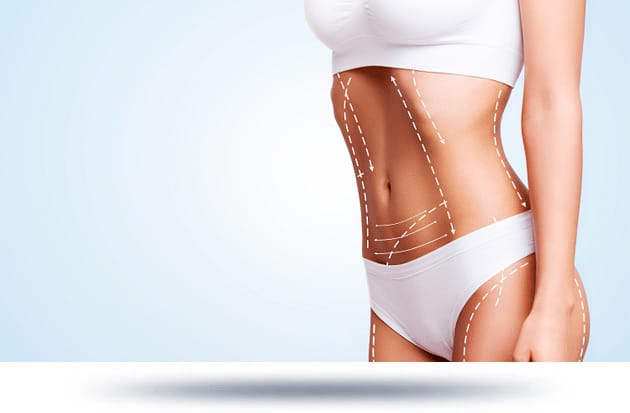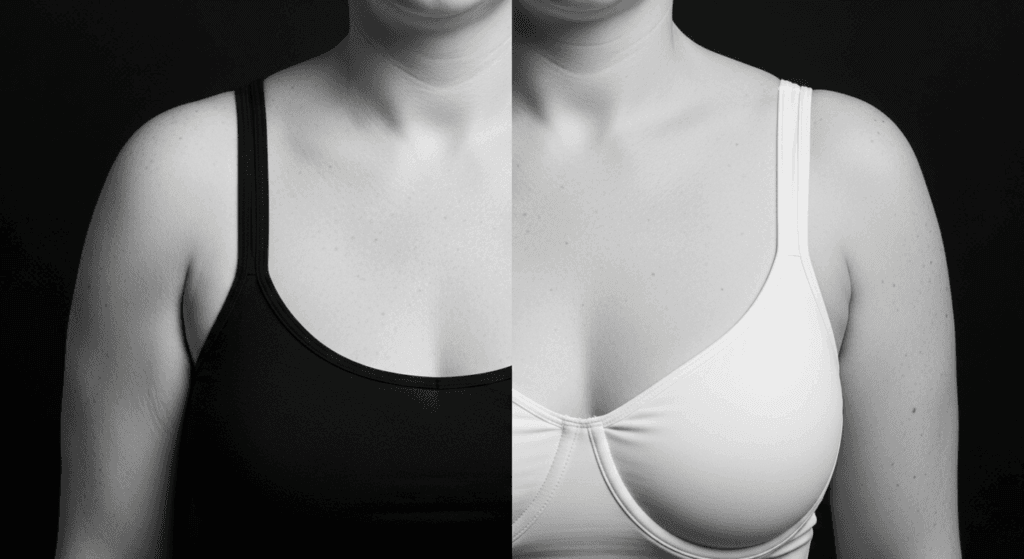Briefly introduce the concept of a mommy makeover and the growing trend of traveling abroad for such procedures. Highlight the importance of safety and the need for thorough research and planning, setting the stage for a comprehensive guide.
Inhaltsverzeichnis
Understanding the Mommy Makeover Journey
This section will define what a mommy makeover entails, detailing the common procedures and the multifaceted benefits it offers to individuals seeking post-pregnancy body restoration.
What a Mommy Makeover Encompasses
Define the term “mommy makeover” as a customized set of procedures designed to restore a woman’s body after pregnancy and breastfeeding, addressing changes that diet and exercise alone cannot.
Core Goals of the Combined Procedures
Discuss the primary aesthetic and functional goals, such as addressing loose skin, separated abdominal muscles (diastasis recti), and changes in breast volume, shape, or position.
Addressing Abdominal Concerns
Explain how procedures target excess skin, fat, and muscle laxity in the midsection.
Restoring Breast Aesthetics
Detail how interventions aim to improve breast size, shape, and projection.
Contouring Other Body Areas
Briefly touch upon the inclusion of liposuction for localized fat deposits in areas like the flanks or thighs.

Typische Eingriffe bei einem Mommy Makeover
Detail the individual surgical components typically involved, explaining what each procedure addresses and its general scope, emphasizing that the combination is tailored to individual needs.
Bauchdeckenstraffung (Abdominoplastik)
Explain the process of removing excess skin and fat from the abdomen and tightening abdominal muscles for a flatter, firmer midsection.
Types of Abdominoplasty
Briefly differentiate between full, mini, and extended tummy tucks.
Incision Placement and Scarring
Discuss typical incision locations and scar management.
Breast Augmentation, Lift, or Reduction (Mammoplasty)
Describe options for restoring breast volume, lifting sagging breasts, or reducing oversized breasts to achieve a more proportionate figure.
Breast Augmentation Options
Cover implants (saline vs. silicone) and fat transfer.
Breast Lift Techniques
Explain various lift techniques based on the degree of ptosis.
Breast Reduction Considerations
Discuss functional and aesthetic benefits of reduction mammoplasty.
Fettabsaugung
Detail how liposuction is used to sculpt and contour specific areas by removing localized fat deposits, often complementing other procedures.
Targeted Areas for Liposuction
Identify common areas like hips, thighs, back, and arms.
Liposuction Techniques
Briefly mention VASER, tumescent, or power-assisted liposuction.
Other Complementary Procedures
Briefly mention other procedures that may be combined, such as arm lifts, thigh lifts, or vaginal rejuvenation, based on the patient’s comprehensive goals.
Benefits Beyond Aesthetics
Discuss the profound physical and psychological advantages of undergoing a mommy makeover, emphasizing improved self-confidence and overall quality of life.
Physical Restoration and Comfort
Elaborate on improvements in posture, reduction of back pain (especially with large breasts or severe diastasis recti), ability to fit into clothing more comfortably, and enhanced ease during physical activity.
Improved Core Strength and Function
Discuss how abdominoplasty can alleviate issues related to weakened abdominal muscles.
Enhanced Clothing Fit and Silhouette
Explain the practical benefits of a more contoured figure.
Psychological and Emotional Well-being
Discuss the boost in self-esteem, improved body image satisfaction, reduction of self-consciousness, and overall mental health improvements that often accompany physical transformation.
Boosted Self-Confidence
Address the positive impact on social interactions and personal outlook.
Alleviating Body Dysmorphia Concerns
Discuss how the procedure can help align self-perception with physical reality.

Navigating Safety When Considering International Mommy Makeovers
This section provides an exhaustive guide to the critical safety factors involved in choosing to undergo a mommy makeover abroad, focusing on due diligence, inherent risks, and legal protections.
Comprehensive Clinic and Surgeon Vetting
Provide a detailed framework for thoroughly researching and selecting a reputable clinic and qualified surgeon in a foreign country, a non-negotiable step for patient safety.
Accreditation and Certifications
Explain the importance of looking for international and national accreditations (e.g., Joint Commission International (JCI), International Organization for Standardization (ISO), or local country-specific medical board certifications) for both facilities and surgeons.
Understanding JCI Accreditation
Detail what JCI accreditation signifies regarding patient safety and quality of care standards.
Local Regulatory Oversight
Advise on researching the equivalent of a local health department or medical council.
Surgeon’s Credentials and Experience
Guide on verifying the surgeon’s board certifications (e.g., American Board of Plastic Surgery equivalent), specialized training in plastic surgery, years of experience specifically with mommy makeovers, and membership in reputable international or national professional surgical associations.
Board Certification Verification
Steps to confirm a surgeon’s qualifications with their respective national medical boards.
Specialization and Case Volume
Inquire about the surgeon’s focus and the number of mommy makeover procedures they perform annually.
Facility Standards and Equipment
Emphasize the need for modern, well-equipped surgical facilities, including state-of-the-art operating rooms, sterile environments, advanced anesthesia equipment, robust emergency protocols, and fully staffed post-operative care units.
Operating Room Hygiene and Sterilization
Discuss the importance of strict infection control measures.
Emergency Response Capabilities
Inquire about immediate access to critical care, blood banks, and emergency medical personnel.
Patient Reviews and Testimonials
Advise on seeking authentic patient feedback from multiple sources (independent review sites, forums), analyzing before-and-after photos critically, and attempting direct communication with former patients if possible to gauge satisfaction and outcomes.
Analyzing Online Reviews
Tips for discerning genuine reviews from potentially fabricated ones.
Requesting Direct Patient References
If available, leverage opportunities to speak with former patients.
Understanding and Mitigating Potential Risks
Detail the specific risks and complications associated with undergoing major surgery abroad, highlighting how these can be amplified in an international setting due to various factors.
Surgical and Anesthesia Risks
Discuss general surgical risks like excessive bleeding, infection, adverse scarring, asymmetry, and complications related to anesthesia (e.g., allergic reactions, respiratory issues, nausea).
Risks Specific to Combined Procedures
Address the increased complexity and potential for longer surgery times with multiple combined procedures.
Anesthesia Safety Protocols
Inquire about the qualifications of the anesthesiologist and monitoring during surgery.
Post-Operative Complications Specific to Travel
Address risks such as deep vein thrombosis (DVT) and pulmonary embolism (PE) from long flights, fluid accumulation (seroma), delayed wound healing, skin necrosis, and challenges in managing infection remotely or upon return home.
DVT Prevention Strategies
Discuss pre-flight and post-flight precautions.
Infection Control Post-Op
Explain signs of infection and importance of hygiene.
Quality of Post-Surgical Care Abroad
Stress the importance of understanding the level and duration of post-operative nursing care, pain management protocols, availability of physiotherapists, and schedule of follow-up appointments provided at the foreign clinic.
Nursing Care and Monitoring
Inquire about nurse-to-patient ratios and experience.
Strategien zur Schmerzbehandlung
Discuss the types of pain relief offered and their availability.

Legal, Ethical, and Communication Considerations
Explore the less apparent but equally critical aspects of international medical tourism, including patient rights, ethical standards, and potential communication barriers.
Legal Recourse and Malpractice Laws
Discuss the complexities of legal action in a foreign country if complications arise, the variance in medical malpractice laws compared to your home country, and the feasibility of pursuing claims across borders.
Understanding Jurisdiction and Litigation
Explain the challenges of legal battles in foreign judicial systems.
Consumer Protection Laws
Research if consumer protection extends to medical services for foreign patients.
Patient Rights and Informed Consent
Highlight the importance of understanding patient rights in the chosen country’s healthcare system and ensuring fully informed consent is obtained in a language you completely understand, detailing all risks, benefits, and alternatives.
Transparent Communication of Risks
Ensure all potential side effects and complications are thoroughly explained.
Right to Second Opinion
Confirm if the clinic supports obtaining a second medical opinion.
Language and Cultural Barriers
Emphasize the potential for miscommunication with medical staff (doctors, nurses, administrative staff) if there is no shared language, and the importance of having reliable translation services or a bilingual support person consistently available.
Professional Interpreter Services
Confirm the availability and quality of medical interpretation.
Cultural Nuances in Healthcare Delivery
Be aware of differences in patient-doctor relationships or communication styles.
Medical Tourism Insurance
[Note: Recommend exploring specialized medical tourism insurance that specifically covers complications from elective surgery abroad, extended stays due to complications, and emergency medical evacuation back to your home country, as standard travel insurance often excludes these.]
Coverage for Complications
Detail what aspects specialized insurance typically covers.
Emergency Evacuation Planning
Understand the logistics and cost of air ambulance services.
Meticulous Preparation for Your Overseas Mommy Makeover
This section offers a comprehensive checklist and advice for preparing both medically and logistically for a mommy makeover abroad, ensuring a smoother and safer experience from pre-departure to post-op.
Pre-Travel Medical Readiness
Detail the essential medical consultations and tests required before embarking on your surgical journey, ensuring your body is optimally prepared for surgery and recovery.
Local Medical Consultation and Clearance
Explain the necessity of obtaining full medical clearance from your local primary care physician or specialist (e.g., cardiologist, endocrinologist) before traveling, confirming you are a suitable candidate for major surgery.
Comprehensive Health Check-up
Undergo a full physical examination and health assessment.
Medication Review
Confirm all current medications are safe to continue or pause.
Required Pre-Operative Tests
List common tests such as complete blood count (CBC), coagulation profile, metabolic panel, urine analysis, and potentially an ECG, chest X-ray, or specific viral screenings (e.g., HIV, Hepatitis), depending on age, health status, and clinic requirements.
Blood Work Analysis
Ensure blood counts and clotting factors are within normal limits.
Cardiac and Lung Function Assessment
For older patients or those with pre-existing conditions.
Disclosing Full Medical History
Emphasize the importance of providing a complete and accurate medical history, including all current medications, supplements, allergies, previous surgeries, and any chronic conditions, to the overseas surgeon. Withholding information can lead to severe complications.
Honesty and Transparency
Stress that full disclosure is for the patient’s safety.
Documentation of Past Medical Events
Provide copies of relevant medical reports or imaging.
Travel and Accommodation Logistics
Provide practical guidance on planning your trip to accommodate surgical recovery.
Visa and Entry Requirements
Advise checking specific visa requirements for medical tourism or general entry for your chosen destination country well in advance, and gather all necessary travel documents.
Visa Application Process
Detailed steps for obtaining required visas.
Passport Validity and Renewal
Ensure your passport is valid for at least six months beyond your planned return.
Flight Planning and Recovery Period
Suggest booking flexible flights, ideally direct or with minimal layovers, and avoiding long-haul flights immediately before or after surgery to minimize DVT risk. Plan for an adequate stay for initial recovery (typically 10-14 days minimum post-op).
Timing of Flights Relative to Surgery
Avoid prolonged sitting before and immediately after surgery.
Length of Stay Recommendations
Understand the ideal recovery duration recommended by surgeons.
Choosing Recovery-Friendly Accommodation
Recommend selecting accommodations that offer comfort, accessibility, quiet environments, and potentially on-site nursing support or close proximity to the clinic for easy follow-up appointments.
Serviced Apartments vs. Hotels
Pros and cons of different accommodation types for recovery.
Accessibility Features
Ensure easy access, lifts, and comfortable sleeping arrangements.
Arranging for a Support Person
Strongly advise traveling with a trusted friend or family member who can assist with daily tasks, provide emotional support, and act as an advocate during your recovery period abroad.
Role of the Support Person
Tasks they can assist with, from errands to communication.
Emergency Contact Information
Ensure your support person has all critical contacts.
Financial Planning and Transparency
Address the monetary aspects and potential hidden costs associated with international medical procedures, ensuring you have a clear financial picture.
Understanding the All-Inclusive Package
Explain what “all-inclusive” usually covers (e.g., surgeon’s fees, anesthesia, hospital stay, basic medications) and what it typically excludes (e.g., flights, accommodation, meals, extended recovery care, specialist post-op medications, revisions, complication management).
Itemized Cost Breakdown
Request a detailed cost breakdown from the clinic.
Clarifying Exclusions
Ask specific questions about what is NOT included in the package price.
Contingency Funds for Unexpected Costs
Stress the importance of having extra funds readily available for unforeseen complications, extended stays, additional treatments, or unexpected travel changes.
Budgeting for Emergencies
Allocate a specific amount for unforeseen circumstances.
Access to Funds Abroad
Ensure you have access to funds (credit cards, local currency).
Payment Methods and Currency Exchange
Advise on secure payment methods (e.g., bank transfer, credit card) and understanding currency exchange rates and any associated fees before making payments.
Exchange Rate Fluctuations
Be aware of potential impact on total cost.
Secure Payment Processing
Verify the clinic’s secure payment gateways.
Essential Packing for Post-Surgical Comfort
Provide a detailed list of items crucial for a comfortable and smooth recovery abroad, considering both medical needs and personal comfort.
Comfort and Compression Garments
List items like loose-fitting clothing, front-opening shirts, easy-to-wear slip-on shoes, and specific compression garments as prescribed by the surgeon (ensure you have spare sets).
Postoperative Kleidung
Importance of wearing prescribed compression garments consistently.
Accessible Clothing
Choose clothes easy to put on and take off with limited mobility.
Medications and First Aid
Advise packing your prescribed medications (with a doctor’s note for travel), over-the-counter pain relievers, laxatives, anti-nausea medication, and basic wound care supplies (e.g., antiseptic wipes, non-stick gauze) for minor issues.
Prescription Copies and Doctor’s Notes
Essential for international travel with medications.
Basic Over-the-Counter Supplies
For minor discomforts or issues.
Entertainment and Communication Devices
Suggest books, e-readers, tablets, headphones, universal travel adapters, chargers, and consider purchasing a local or international SIM card for reliable communication.
Staying Connected
Importance of a reliable phone and internet connection.
Diversions During Recovery
Items to help pass the time during rest.
Important Documents
Emphasize packing passport, visa, flight tickets, medical records (summaries, test results, imaging), insurance details, emergency contacts, and the clinic’s full contact information. Keep digital copies accessible.
Organized Medical Documents
Keep all health records readily available for review.
Emergency Contact Information
For both family and medical facilities.
Optimizing Post-Surgical Recovery and Aftercare Abroad and At Home
This section outlines the critical phases of recovery, from immediate post-operative care in the foreign country to long-term healing upon returning home, with a focus on complication management and ensuring continuous support.
Immediate Post-Operative Care Overseas
Detail the care and monitoring received in the critical days immediately following surgery while still in the foreign country, ensuring a stable foundation for healing.
Hospital Stay and Initial Monitoring
Describe the typical duration of hospital stay, continuous monitoring of vital signs, management of surgical drains, and initial pain control strategies.
Vital Signs and Drain Management
Understanding what nurses are monitoring.
Initial Pain Control and Medication Schedule
Adherence to prescribed pain relief.
Wound Care and Incision Management
Explain the proper techniques for wound cleaning, sterile dressing changes, and identifying early signs of infection (e.g., excessive redness, swelling, warmth, discharge, foul odor).
Aseptic Dressing Techniques
Ensuring proper hygiene around surgical sites.
Anzeichen einer Infektion erkennen
What to look for and when to alert medical staff.
Early Mobilization and Activity Restrictions
Highlight the importance of gentle walking to prevent deep vein thrombosis (DVT) and promote circulation, alongside strict adherence to activity limitations prescribed by the surgeon to protect healing tissues.
Gradual Ambulation
Importance of short, frequent walks.
Restrictions on Lifting and Straining
Protecting sutures and preventing complications.
Nutritional Support and Hydration
Emphasize the role of a healthy, balanced diet rich in protein and nutrients, and adequate fluid intake in the healing process, aiding tissue repair and energy levels.
Protein-Rich Diet
Support for collagen synthesis and wound healing.
Maintaining Hydration
Crucial for overall health and recovery.
Transitioning to Recovery Accommodation
Guidance on managing the shift from hospital to a recovery house or hotel, ensuring continued support and comfort.
Continued Nursing Support
Discuss the availability of nursing assistance for medication administration, wound checks, and general post-operative care within the recovery accommodation setting.
Daily Health Check-ins
Regular monitoring by nursing staff.
Assistance with Daily Tasks
Help with dressing, bathing, etc.
Managing Swelling and Bruising
Provide tips for reducing post-surgical swelling and bruising, such as consistent use of compression garments, elevation of surgical areas, and gentle cold compresses as advised by the surgeon.
Compression Garment Adherence
Crucial for fluid reduction and contouring.
Elevation Techniques
To minimize fluid accumulation in operated areas.
Long-Term Recovery Back Home
Provide a roadmap for continued healing once the patient returns to their home country, focusing on progressive recovery milestones and self-care.
Follow-up with Local Medical Professionals
Stress the importance of scheduling follow-up appointments with a local primary care physician or a plastic surgeon (who is aware of your surgery abroad) for ongoing monitoring, drain removal, and general post-operative assessment.
Communicating with Local Doctor
Providing overseas medical records for continuity of care.
Scheduled Follow-up Appointments
Regular check-ins for healing progress.
Resuming Daily Activities and Exercise
Offer a realistic timeline for gradually returning to work, light daily activities, and eventually more strenuous exercise, emphasizing listening to your body and avoiding overexertion.
Phased Return to Work and Activity
Guidance on when it’s safe to resume normal routines.
Structured Exercise Progression
When and how to reintroduce physical activity.
Scar Management Techniques
Discuss options for minimizing scar appearance, such as consistent use of silicone sheets or gels, gentle massage, sun protection, and avoiding tension on incisions.
Topical Scar Treatments
Application methods and duration.
Sun Protection for Scars
Preventing hyperpigmentation.
Psychological Adjustment and Emotional Support
Address the emotional aspects of recovery, navigating body image changes, and the importance of patience, self-compassion, and seeking emotional support if needed.
Managing Post-Operative Blues
Understanding and coping with emotional fluctuations.
Seeking Professional Counseling
If persistent feelings of anxiety or depression arise.
Recognizing and Managing Complications Remotely
Empower patients to identify potential issues and understand how to seek help effectively even from a distance, bridging the gap with their overseas surgeon.
Warning Signs of Complications
List specific symptoms that indicate a potential complication requiring immediate medical attention (e.g., persistent fever, severe or increasing pain, spreading redness, purulent discharge from incisions, shortness of breath, sudden swelling in one leg).
Fever and Chills
Indicators of potential infection.
Unexplained Pain or Swelling
Could signify seroma, hematoma, or DVT.
Communication Protocols with Overseas Surgeon
Advise on establishing clear communication channels with the operating surgeon for remote consultations, sending photos of incisions, and receiving advice, especially during early recovery at home.
Preferred Communication Methods
Email, secure patient portal, video calls.
Response Time Expectations
Understand when to expect replies from the clinic.
Emergency Plan for At-Home Complications
Guide on having a local emergency contact (e.g., family member, trusted friend) and understanding when to go to a local emergency room or urgent care clinic for severe or rapidly worsening symptoms.
Local Emergency Services Contact
Know when to call 911 or equivalent.
Informing Local Medical Staff
Be prepared to explain your recent surgery abroad.
Abschluss
Undergoing a mommy makeover abroad can be a viable and often cost-effective option for many women, offering the opportunity to achieve significant personal transformations. However, the success and safety of such a journey are inextricably linked to meticulous planning, diligent research, and a profound commitment to understanding and mitigating the inherent risks. By prioritizing comprehensive vetting of clinics and surgeons, engaging in thorough pre-surgical preparation, securing adequate post-operative care, and having a robust plan for managing recovery both abroad and at home, individuals can significantly enhance their safety and achieve their desired outcomes. The decision to pursue a mommy makeover internationally should always be guided by an unwavering focus on health and well-being, ensuring that the allure of aesthetic enhancement never overshadows the imperative of safety.
Summary of Key Safety Pillars
Briefly recap the main themes: diligent research into accredited facilities and qualified surgeons, thorough preparation of both medical and logistical aspects, setting realistic expectations for results and recovery, and ensuring robust post-operative care protocols are in place.
Empowering Informed Decisions
Reiterate that while financial savings can be an attractive motivator, the ultimate decision should prioritize personal health and safety above all other considerations. Patients should feel fully empowered by knowledge to make choices that serve their best interests.
Key Takeaways [Note: Create a bulleted list summarizing the 3-4 most important points from the article, such as the critical importance of verifying surgeon and clinic accreditation; the necessity of comprehensive pre-operative medical clearance; ensuring a robust plan for immediate and long-term post-operative care, including managing potential complications remotely; and the value of specialized medical tourism insurance.]
Häufig gestellte Fragen
This section addresses common queries related to the safety and logistics of international mommy makeovers.
What is the typical recovery timeline for a mommy makeover when performed abroad?
Provide an overview of the typical recovery timeline, emphasizing the initial recovery period while abroad (e.g., 10-14 days for initial healing and drain removal) and the progressive healing stages upon returning home (e.g., 6 weeks for returning to light activities, 3-6 months for significant swelling reduction, and up to 1 year for final results to settle).
How can I verify the credentials of an international plastic surgeon?
Offer practical steps for vetting, including checking their professional organization memberships (e.g., ISAPS, ASPS equivalent), board certifications through national medical councils, reviewing patient testimonials on independent platforms, and directly requesting proof of qualifications and surgical experience from the clinic.
What specific medical tests should I undergo before traveling for my mommy makeover?
List common pre-operative tests such as complete blood count, coagulation profile, metabolic panel, urine analysis, and potentially an ECG or chest X-ray, depending on your age, health status, and the specific requirements of the international clinic.
Are there specific travel insurance policies recommended for medical tourism?
Explain that standard travel insurance typically excludes complications from elective surgery abroad and strongly suggest looking for specialized medical tourism insurance that specifically includes coverage for medical complications, extended stays due to complications, and emergency medical evacuation back to your home country.
What should I do if a complication arises after returning home from my mommy makeover abroad?
Provide clear instructions: immediately contact your overseas surgeon and their medical team for virtual consultation, consult with your local primary care physician or a local plastic surgeon who is aware of your recent surgery, and be prepared to seek emergency care at a local hospital if symptoms are severe or rapidly worsening.
How do I manage language barriers with the medical team during my mommy makeover abroad?
Suggest practical options such as bringing a bilingual companion, utilizing professional medical translation services provided by the clinic, or using reliable translation apps, and always confirming that all critical medical information is conveyed and understood in your native language.
Is it truly more affordable to have a mommy makeover abroad, and what are the hidden costs?
Discuss the potential for significant cost savings on the surgical procedure itself, but also highlight common hidden expenses such as round-trip flights, accommodation (including recovery stays), meals, local transportation, post-operative medications, follow-up appointments, and potential costs for complication management or revisions that are not covered.
How long should I plan to stay in the destination country after my mommy makeover?
Advise on the generally recommended minimum stay, typically 10-14 days post-surgery, to ensure initial healing, allow for drain removal, receive crucial post-operative check-ups directly from your surgeon, and enable safe clearance for long-haul travel.
Our Surgeons and Affiliated Professionals
At Surgyteam, we are proud to collaborate with a distinguished team of medical professionals, each bringing a wealth of expertise and a commitment to patient-centered care.
- Dr. Mehmet Fatih Okyay (Dr. MFO): Plastic, Reconstructive and Aesthetic Surgery Specialist. Co-founder of Surgyteam. FEBOPRAS certified. (https://www.dr-mfo.com/)
- Dr. Selçuk Yılmaz: Plastic, Reconstructive and Aesthetic Surgery Specialist. (https://drselcukyilmaz.com)
- Dr. Ebru Okyay: Dermatology Specialist. (https://drebruokyay.com/)
- Dr. Mustafa Keleş: Aesthetic, Plastic and Reconstructive Surgery Specialist. (https://www.medstar.com.tr/doktorlar/mustafa-keles/)
- Dr. Boray Yücel: Plastic, Reconstructive and Aesthetic Surgery Specialist. (https://borayucel.com/)
- Dr. Sibel Atalay: Plastic, Reconstructive and Aesthetic Surgery Specialist. Clinic with International Health Tourism Authorization Certificate. (https://www.sibelatalay.com.tr/)
- Dr. Mert Meral: Plastic, Reconstructive and Aesthetic Surgery Specialist. EBOPRAS certified. (https://mertmeral.com/)
To learn more about Surgyteam and how we can assist you, please visit our website:
https://surgyteam.com/
Disclaimer: This blog post is intended for informational purposes only and does not constitute medical advice. Costs are estimates and can vary. Always consult with a qualified medical professional for personalized advice and treatment.



